 Agenda
Artikelen
Programma
Agenda
Artikelen
Programma
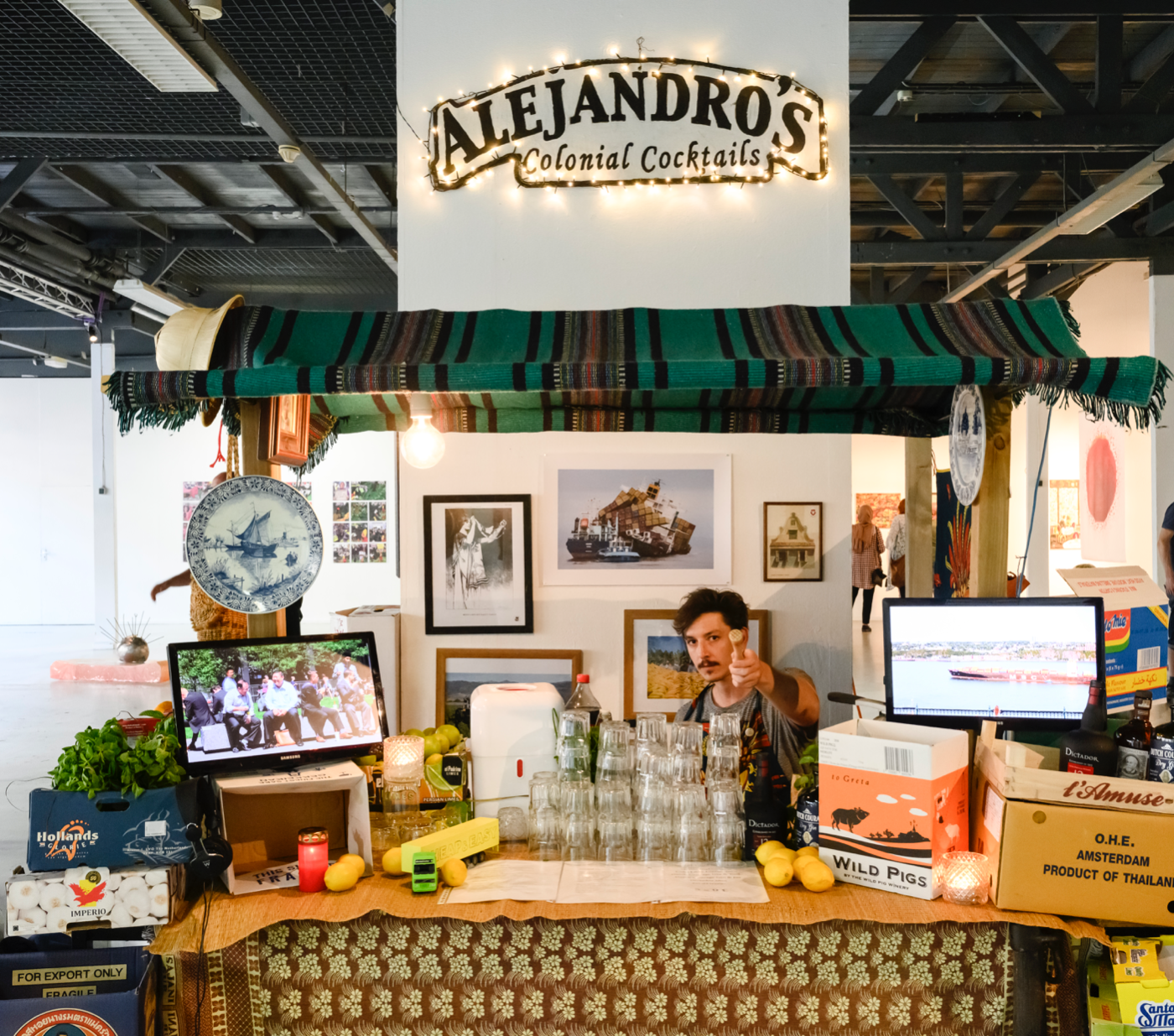
Interview with curator Susanne Khalil Yusef and artists Lama Altakruri, Ala Albaba, Lydienne Albertoe, Wonne
The political impact of the word refugee makes us forget that for those who are characterized as such, this is no longer a word, but a state of being. Refugee in the sense of “displaced in the own country”, this wording applies to a distressing percentage of 60% of the so far known refugees on a global scale. But to be displaced in your own country, you don’t even have to be a refugee. The exhibition HALTE! by curator Susanne Khalil Yusef does not interfere in this discussion, but starts the dialogue. Young Palestinian and Dutch artists who can identify with feeling of being displaced, from their own experience or through a personal motive, have been invited to reduce the charged theme of post-colonialism to a personal story. HALTE! shows artworks by Ala Albala, Alejandro Cerón, Ali Aldeek, Eliza Bordeaux, Lama Altakruri, Lydienne Albertoe, Malak Mattar, Marah Zouabi, Qais Assali and WONNE.
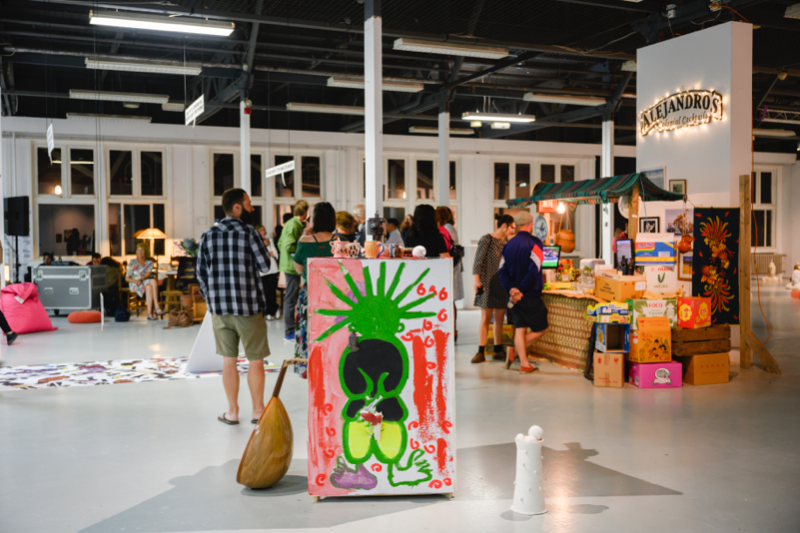
The search for identity
“More than two years ago I started this project by thinking about an exhibition about contemporary colonialism. In the Arabic world you often see that artists also work as curators. This inspired me to take the freedom to do it myself. That I don’t show work of my own is a conscious choice. I want to be there for the artists I invited. The artists of HALTE! are a huge source of inspiration for me, but also artists with whom I can deepen the discussion about post-colonialism. ”
– Susanne Khalil Yusef, artist and curator –
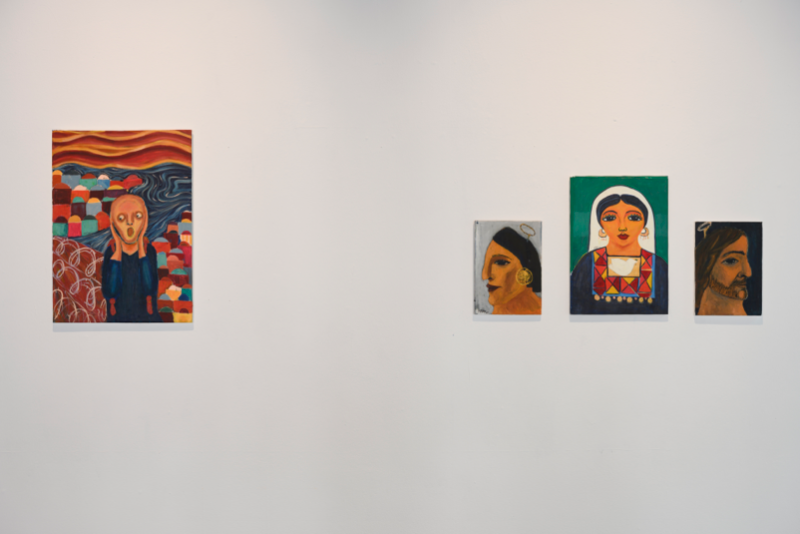
Malak Mattar – Untitled
For visual artist Susanne Khalil Yusef, the theme of HALTE! more than a theoretical question. As a born Palestinian she knows refugee issues from a personal perspective and has experienced this in the wake of her parents in their search for a safe place. It is her artistry in which identity is an important aspect. Identity that is taken away from people when they have to leave their living environment and their cultural values become obsolete. In her work, Susanne protects Palestinian history from fading by collecting and reforming memories. One of the artists she invited is Lama Altakruri, who collects happy memories in her work.
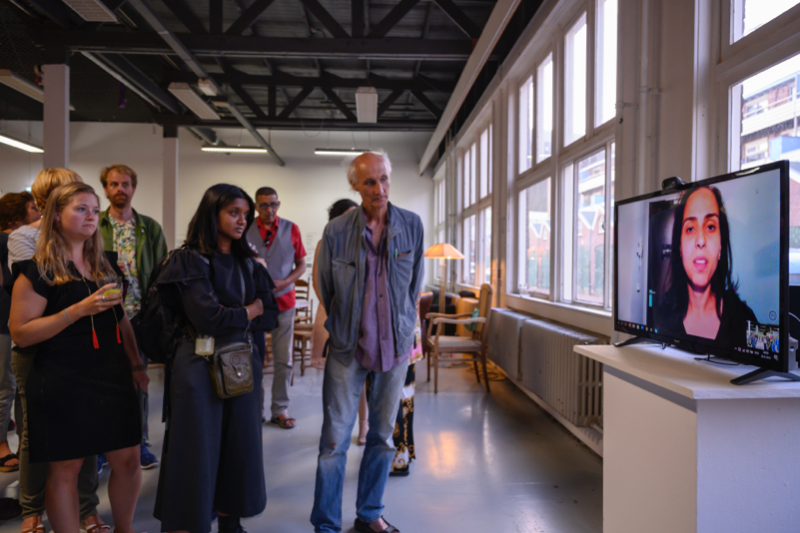
Lama Altakruri – They’re So Happy I am Here
“My work is about the comfortable feeling that comes from creating carefree moments where I can let my memories of Ramallah flow. How, by isolating myself in a place where there is a form of timelessness, I can recall the memories of the people I know, the social life where I felt happy.
I started researching this fact when I went to study in Chicago. I went to hotel chains which are the most impersonal places I know. Every hotel room is similar to the previous one, they are a kind of Limbo just like the departure hall at Airports. Places where people eat, sleep and spend their time together, but where no one lives. Everything is aimed at departure; everyone is only there temporarily. I am fascinated by the fact that such neutral zones exist. This “global bubbles” that seem to be separate from their environment. Just like the hotels where I can recall my memories by staying in the room all day and living from room service. I write down the memories and are part of my work, but staying in Chicago also brought me something different, it broadened my view. Previously, Ramallah was my world, but since then I have been experimenting with staying in all kinds of “Limbo” in different parts of the world.”
– Lama Altakruri, artist –
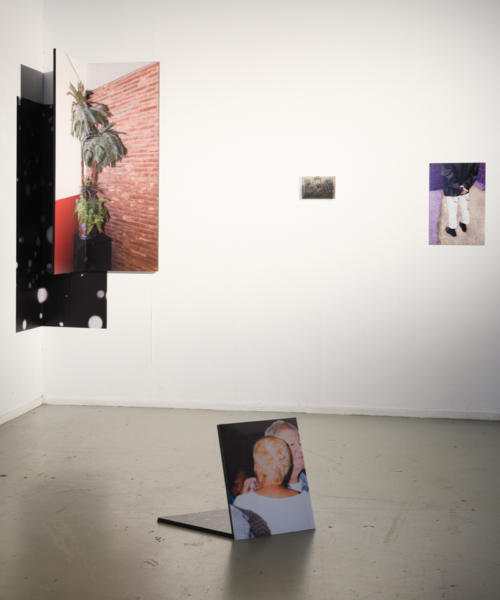
Eliza Bordeaux – Celebration of Denial and the Undefined Exotic
Racism
An exhibition like HALTE! does not leave precarious subjects undiscussed. Hidden inconvenience such as racism on home soil due to years of neglect at social festivities. For Susanne, her role as curator goes beyond composing, it is about a dialogue that, when subjects are so large, is simply forgotten. “I often sit in the exhibition space and sometimes see the reactions of visitors. As with the work of Lydienne Albertoe, The Feeling of Otherness, How do you explain to another, how does it feel to be the other. It is a conscious decision to place her work in such a way that when you enter the space you cannot ignore it, you have to walk over it. So it is unavoidable to read the quotes that deal with racism discussion. Some find it violent, shocking, but understand and appreciate her directness. Then there are visitors who feel attacked by the work and who, in a kind of incomprehension, scoff at or disapprove of.”
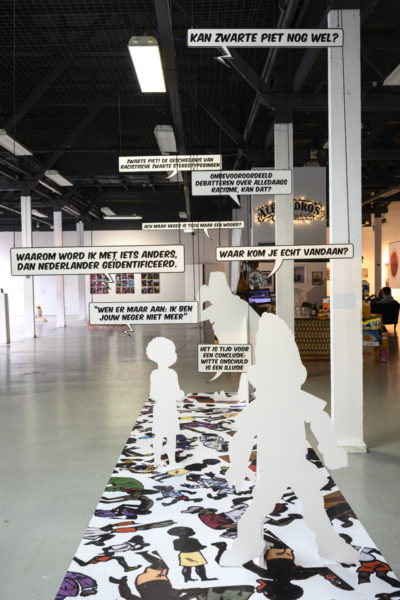
Lydienne Albertoe – The Feeling of Otherness, Hoe leg je aan een ander uit, hoe voelt het om de andere te zijn.
Text is one aspect, but Lydienne also uses the image that is just as guilty. She mixed classic comics such as those of Tintin or Sjors and Sjimmie with contemporary images such as ethnically profiled police brutality and the Black Pete discussion. An intervention that also struck a sensitive chord. “That provokes strong reactions, but they can lead to the start of a conversation. I don’t really need discussion, but I do feel a need to play a role in it. The trigger was an album by Suske en Wiske that was released in July 2017, which initially caused commotion about the bare breasts of one of the characters. Even worse were the big lips of another character who had to represent the man of colour in a racist way. In Dutch history, I miss the total history of all Dutch people. The Kingdom is much larger than just the European part, but for all black influences we look to America and Africa rather than within our own borders. Now there is discussion about the former sea heroes, here but also in Curacao, and there too the idea exists to remove their statues. I am not in favor of that, what really changes? Rather, context needs to be added. Awareness is what it is about, informing and moving in the other. I create by dissecting and then bringing back together again. I don’t feel Dutch, I don’t feel Curacaoan, I’m Lydienne.”
– Lydienne Albertoe, artist –
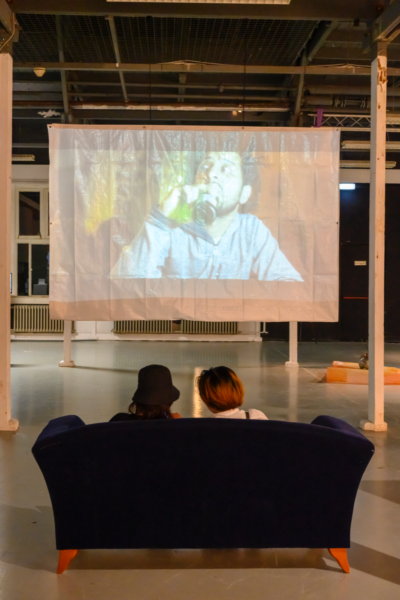
Ali Aldeek – Condition 2
Discrimination
There is also discussion about the paintings of Ala Albaba. His colorful representations of the camp in Ramallah confuse viewers and are attributed to a universal image, seen as the Brazilian Favela. Aside from the question of whether the Favela is a better starting point, this shows a lack of prior knowledge to be able to see reality beyond color.
“That it is gray is not necessarily characteristic of Ramallah. However, there are black plastic barrels everywhere on the roofs to store water. These appear in all of Ala’s paintings. That is typical of Palestinian neighborhoods and refugee camps because the water is often closed off by the Israeli occupiers. But it is unhealthy to store water in these tons, especially since they are often in the full sun. People who are more affluent have aluminum barrels, but there are far fewer. It makes sense that people only see what they can recognize. They only see buildings and do not recognize the situation.”
– Susanne Khalil Yusef, artist and curator –
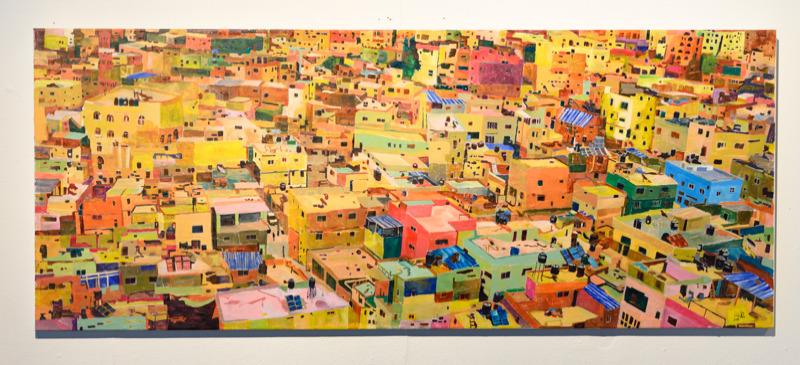
Ala Albaba – The Camp
For Ala Albala, painting is a way of making contact with the world where he cannot easily go. In his studio he invites artists from different countries to come and work and stay here. Where he paints in a disciplined way every day, and literally brings out the colors by actually painting the gray walls. Parodoxly, the paint sold in Palestine is of inferior quality, disappearing a little with each rain shower. “Painting is about creating the fantasy. The colors I use in my work are a form of criticism of the grayness of Ramallah. Painting is a sense of duty, a way of understanding the place where I live. Palestine has been for 70 years as a geographic space, and although politics and politicians are changing, everything remains the same. The political debate is done over our heads, the situation in which the Palestinians find themselves is permanent. I live in a camp located in a captured State. A place that cannot grow, only in height. ”
– Ala Albaba, artist –
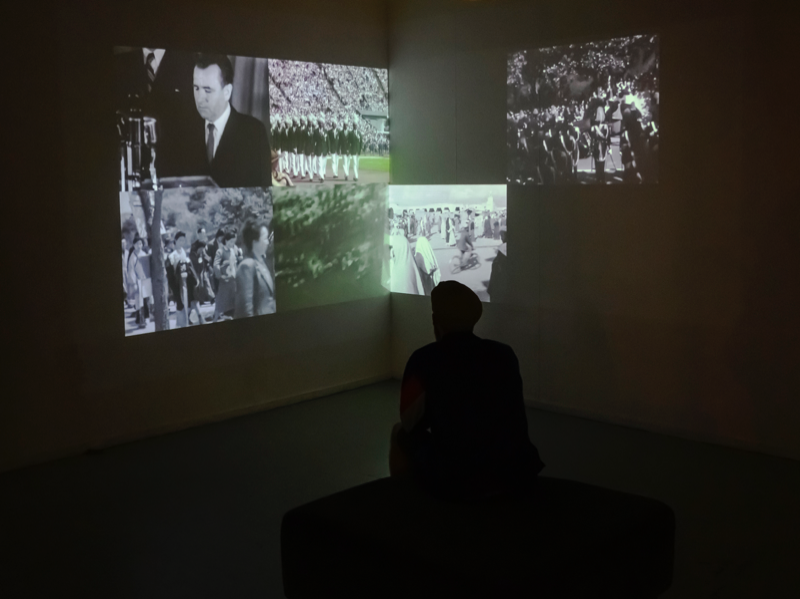
Qais Assali – The Parade 1948
Emancipation
Boris Groys’s Politics of Installation essay is about the idea that making an installation is a form of art with which you create one large work of art. That is a fascinating idea for Susanne. “Working with installations gives me more influence on how my work comes into the world. Which does not always work, sometimes I have to compete with a curator. Because I understand an artist’s perspective well, I was able to avoid that as a curator in this exhibition.
In this project I was also able to realize my dream by bringing all my favorite fighters together. Also, from other disciplines such as anthropologist Gloria Wekker, spoken-word artist Stryder and film director Michael Singh. But the most important discovery is that no matter how difficult and impossible it seemed to arrange visas for Palestinian artists and raise funds, it still works! Just as it is fantastic that young artists from the Netherlands and Palestine can meet and exchange ideas. We have much more in common than we ever thought.”
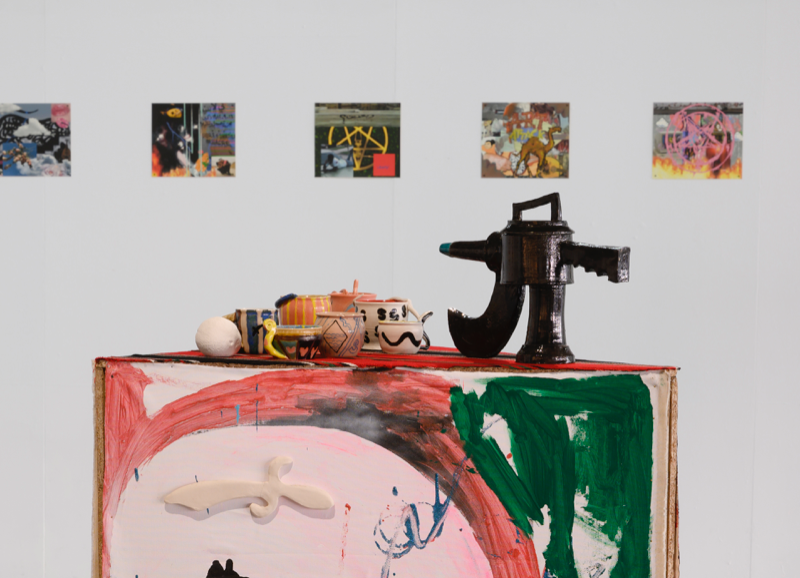
WONNE – Tea Set & Just-ICE collage series
Although most of the artists at the exhibition HALTE! propagating a story of social liberation and personal experiences, WONNE conveys a feeling that comes from the material, intuition and encounters. “We stayed in the same hostel and built up the work during the day together. That’s how we got to know each other and each other’s work very well. I was very impressed with the paintings by Ala Albala. Especially one small canvas that is very peaceful and beautiful, but at the same time very dark. Really great. He inspires me to start painting again. I had another good meeting with Alejandro Ceron, who is participating in the exhibition with his great Colonial Cocktailbar. We knew each other before, but we have now also come to a collaboration. A performance that we will do during the finnisage entitled A schizo-performance on the cacophony; There are sounds and noices trying to get in our heads. I really like performance because it gives you the most direct connection with the audience. And it is also one of the most exciting things to do. In principle I can make work with any technique or medium. As an artist, you put energy into something, to transform it into something you can love. Whether I transform clay into a tea set, pictures found into a collage, or actions into a performance, it makes little difference in that area. Transformation to love is what matters, which is why difficult and painful themes are extra interesting to me. Post-colonialism is not really a theme for me. It is a word that is too rational in nature to feel anything about it. But I am, for example, very concerned with freedom, violence and power, and that of course has to do with it.”
– WONNE, artist-
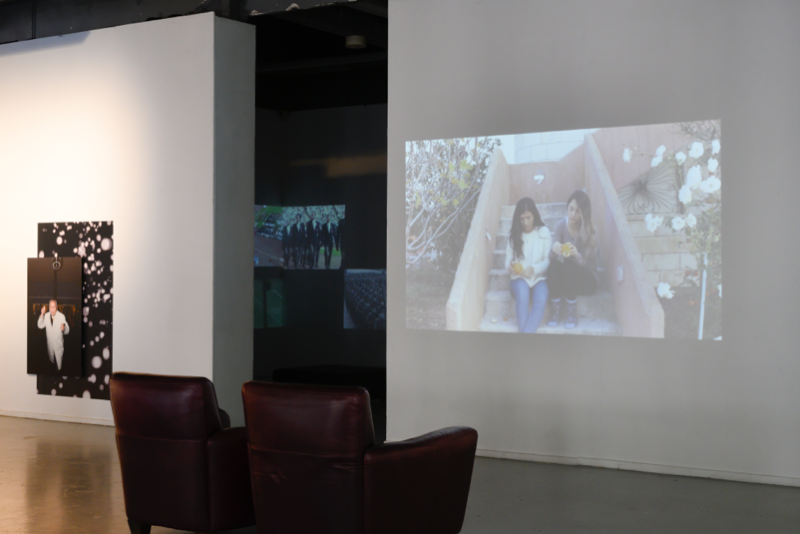
Marah Zouabi – Ahmad and Deed
The exhibition HALTE! provides insight into a parallel world. A world where borders do exist. Where the feelings of others are not taken into account. Where racist remarks can spread with impunity. It is not through the harmony of the exhibition image that we see this world, on the contrary it twists and scrapes, and pushes and pulls and clings mercilessly to every viewer. You can call it awareness, but that implies that there was previously a state of unconsciousness. Without compromising on the aesthetic qualities of the individual works, HALTE! all in all, a statement by a new generation of artists who, in their open and honest attitude, address thorny issues without pointing with an admonishing finger. History cannot be changed anymore, but the future is still open to them.
This interview is also published in Dutch on October 30 2019